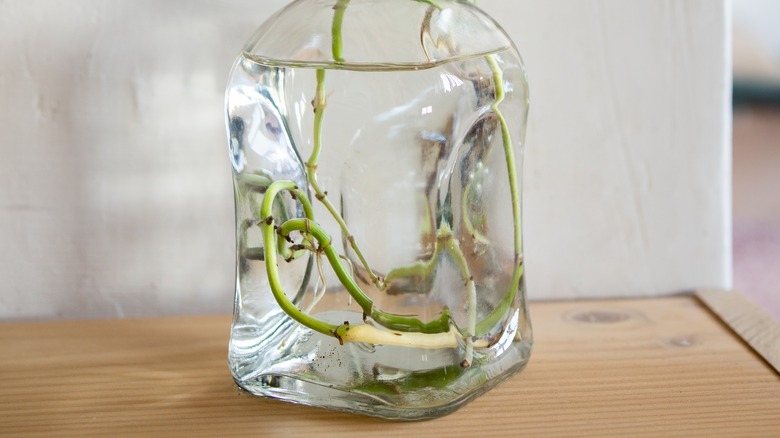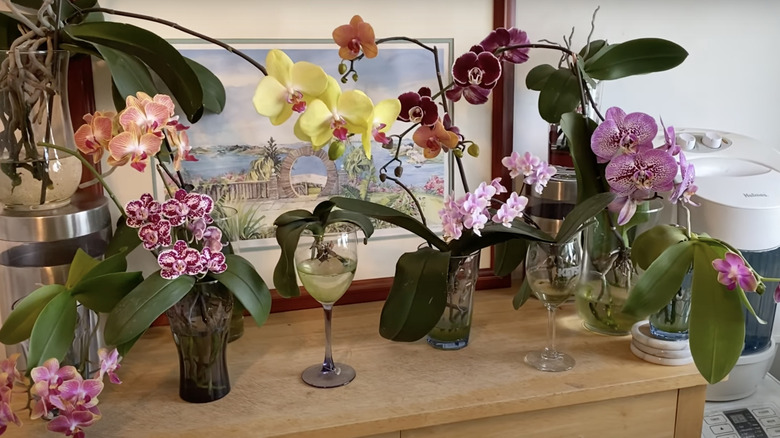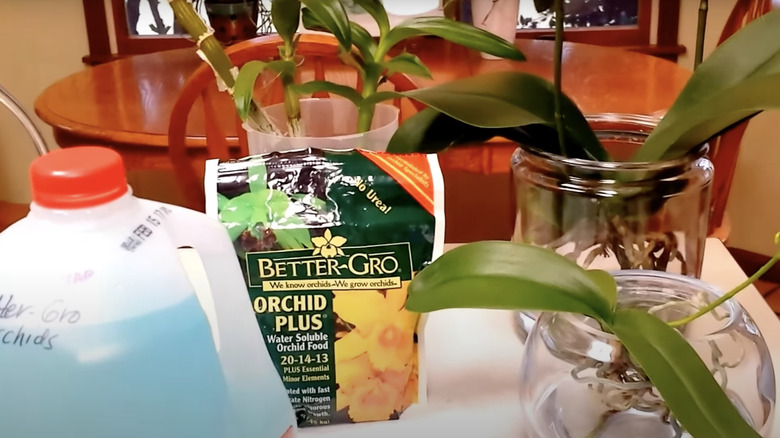The Beautiful Flower You Can Grow Indoors Without Using Any Soil
Growing indoor plants takes patience and discipline. Each plant has different light, watering, and fertilizing needs. When you plant them in soil, they also need extra attention to ensure their roots don't get waterlogged and pests or bacteria don't invade. Soil is essential when growing most plants, and if it isn't properly cared for, it can cause a lot of stress and issues to the point of killing your plant. However, you can also skip plants that require soil and opt for something more manageable that only requires water. For instance, moth orchids (Phalaenopsis orchids) are beautiful flowers you can grow indoors without using any soil at all.
You might wonder how plants grow without soil, their central support system. Using a hydroponic technique, plants can grow successfully in water mixed with minerals and a few materials, like clay pebbles or stones. The water culture is easier on their roots, helping to keep them healthy. According to the University of Mayland Extension, moth orchids are epiphytes, naturally growing on tree bark where their roots extend over the surface. Since they have wandering roots, growing them indoors can be tricky because their roots will grow and hang over the pot and may be tempting to cut. But you should leave this orchid's roots alone unless they are unhealthy. Aside from their interesting growing process, they're easy to care for and make great additions to any indoor space.
Choosing the best water culture method for your orchid
Before planting your phalaenopsis hydroponic garden, you need a vase and water to ensure your moth orchid thrives in your home. You can use three different water culture methods for your orchids: Full water culture, semi-water culture, and semi-hydroponic culture. A full water culture requires some of the orchid's roots to always sit in water, while semi-water culture involves the orchid's roots sitting in the water for a few days, then throwing out the water to let the roots dry for a few days. Some folks will have their orchids sit for five days and dry for two days. Others will let them sit in water for four days and dry for three days. A semi-hydroponic culture is similar to these two water cultures, where the orchid sits in the water and has a drying day, but includes adding clay pebbles or stones to the container.
Every moth orchid has different watering needs, so it's crucial to pay attention to how they respond when they're in water. Adjust the water levels if you notice your flowers drooping or any leaves turning yellow. You don't have to change the drying time; you only have to change how much water you give your plant to ensure it's fully hydrated. Every flower has a different growing process. Over time, you'll learn what your moth orchid needs, and you can make any necessary changes so that it grows happy and healthy.
Fertilizing your moth orchid
While water culture can be an easy way to grow epiphytic orchids, you may still run into a few issues that will take time to catch and fix. Fertilizing plants is an essential step when you're growing them indoors and outdoors, helping to encourage new, healthy growth. However, it can be challenging when you're growing plants in water. Some fertilizers are mixed with the soil, while others are sprayed on the plants. In this case, when fertilizing your orchids, add the fertilizer to the water after the plant's final drying day. Since you'll change the water once a week, you only need to fertilize once weekly. In addition, the amount will vary per flower since some will have a larger water intake than others.
Each package will tell you how much fertilizer you should give your plant each month. However, adding a ¼ strength dose of fertilizer to the water weekly is the best way to meet your plant's needs. For instance, if your fertilizer package recommends adding 2 tablespoons of fertilizer per gallon of water monthly, use only 1½ teaspoons instead and water your plant weekly. Each brand of fertilizer will have a different recommended dosage, so ensure you read the instructions before calculating.
Since you won't need to repot your phalaenopsis, keep an eye on its progress. Ensure it's receiving the right amount of water, sunlight, and temperature. These plants enjoy indirect bright light in warmer rooms at 70 to 80 degrees Fahrenheit.


